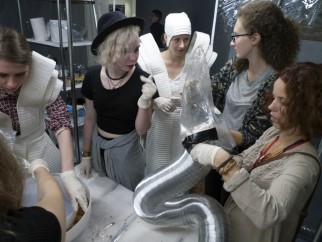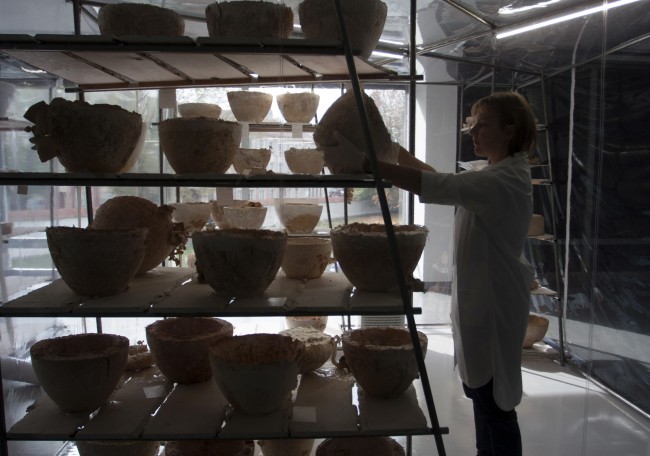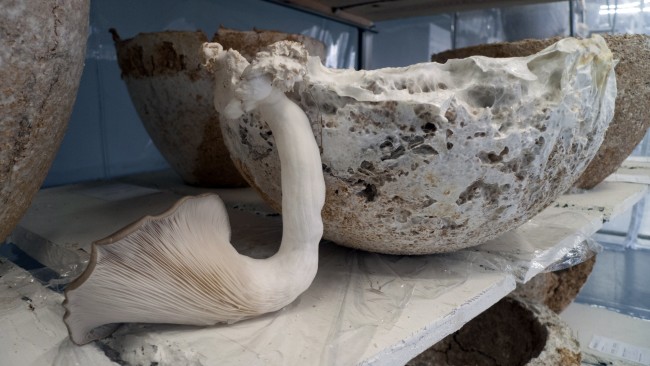Zooetics is a notion in progress to explore new ways to engage human knowledge – scientific methods and the infrastructure of institutions – and research with other forms of life – from mammals to microbes to molluscs – and to imagine designs, prototypes and interfaces for future interspecies ecologies. Psychotropic House is one of the experiments that aim to articulate this notion…
Part of the Zooetics research* involves finding a common language across disciplines in the sciences and arts. Another part engages the frontier site of disconnection between human knowledge and the knowledge of other life, by using fiction (literary and visual) as a method to engage with the unknown, unknowable and apparently insoluble.
First shown as a functioning laboratory at the Contemporary Art Centre in Vilnius (2015), Psychotropic House constructs reality through ideas inspired by the living technology described in the collection of stories Vermilion Sands (1971) by the English science fiction writer J.G. Ballard.
Psychotropic House tests an idea that objects, buildings and forms, rather than only be produced, can also be grown. This experiment aims to push the common understanding about materiality towards a rhizomatic concept while using mycelium. Mycelium is a life form of extra-terrestrial origin; it is parasitizing and colonializing. It can cannibalise other cultures or materials, create hybrids, make new nets and constellations, that have been claimed as the ‘plastic of the future’.

The artefacts on view are produced in attempt to find a formula of the production of mycomorphs – mycelium-based forms that would best serve yet undefined utilitarian and decorative purposes. Mycomorphs combine those two elements and create a choreography marking the topological infrastructure of three valleys, that happen to overlap in space, facilitating the intersection of three types of knowledge production: Adam Mickiewicz valley (poetic knowledge), Kaunas Zoo (valley of non-human knowledge) and Kaunas University of Technology (valley of human knowledge). Zooetics inquires the territory where matter, hybrid materials, biotechnologies and network systems intersect and collide. It offers a research expedition towards the knowledge of non-human life, using art and poetics – ‘infectious stories’ (Easterling), ‘a sensing into’ (Fuller), imaginaries of ‘communities of species’ (Papadopoulos), close encounters and proximities – to try to cross into this apparently impenetrable terrain.




* The Zooetics research, conceived by Nomeda and Gediminas Urbonas in dialogue with Tracey Warr and Viktorija Šiaulytė, aims to address the crisis in human relationships with the environment by unpacking notions of Anthropocene, Nature and Interspecies and looking at new conjunctions across these concepts. More at: zooetics.net
—
The mycomorph lab architectural part is realised in collaboration with Paulius Vaitiekūnas, Andrius Pūkis, Jautra Bernotaitė. Sound recording and mastering: Antanas Dombrovskis.
Project partner: Baltic Champs.
Thanks to Marijus Bakas, Dionizas Bajarūnas, Dalius Keršys, Paulius Pilipavičius, Gediminas Stoškus.










